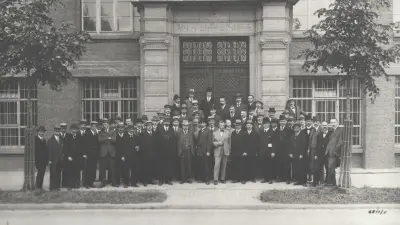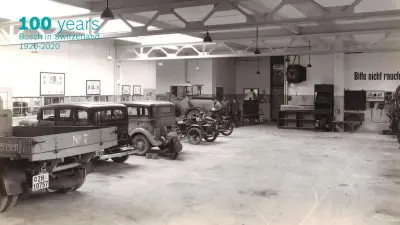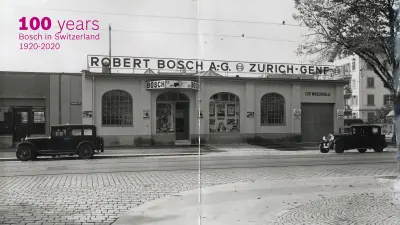Closely linked for more than a hundred years. Robert Bosch AG in Switzerland
Helping to shape the new world
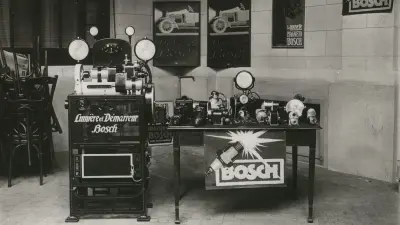
“By taking this step, we have once again solidified our relations with the Swiss market …,” the Bosch-Zünder in-house newspaper announced in 1920. The step in question was the founding, on September 8 of that year, of the Swiss subsidiary Robert Bosch S.A. Geneva-Zurich, the first postwar subsidiary outside Germany.
The founding of Robert Bosch S.A.
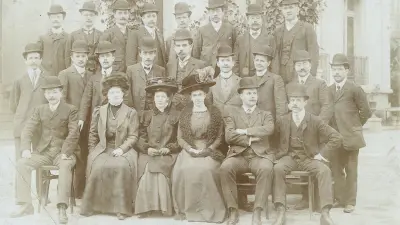
The new stock corporation, which was based in Zurich and had a branch in Geneva, replaced the Swiss private company Robert Bosch, which was located in Geneva and had represented the Stuttgart-based company there since 1910. Before that, the engineer August Euler had been responsible for sales of Bosch products in Switzerland starting in 1904. The commercial register extract dated October 2, 1920, stated the new company’s purpose: “Manufacture and sale of goods of all kinds falling within the electrical engineering and precision mechanics sector …” In particular, the new firm was to continue the old private company’s commercial business. To this end, a new sales office with an installation workshop was opened in Zurich in April 1920. The existing Geneva location, on the other hand, had already resumed business the year before.
Before the first world war, the entire world had been Robert Bosch’s market. But afterward, the majority of the company’s holdings abroad were seized or expropriated. Inflation took hold in Germany starting in 1919. With the debt overhang from the war and unimaginable sums in reparations owed, the country continuously expanded the amount of money in circulation. Amid this situation, the company made every effort to keep production running and acquire new customers. The new subsidiary in neighboring, neutral Switzerland became an important international outpost. Two experienced associates, Paul Mumprecht and Daniel Rathgeber, who had previously managed the Geneva sales office together, were tapped to serve on the board of management.
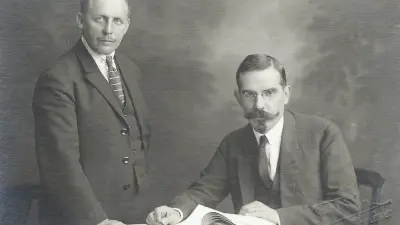
A difficult start
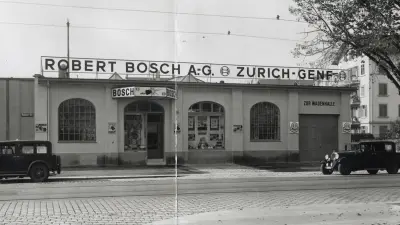
Trade relations in Switzerland were slow to resume at first. For one thing, the postwar depression of the early 1920s affected Switzerland alongside other countries – and for another, the strong Swiss franc meant that Switzerland was barely able to sell its products to neighboring countries with weaker currencies. The Swiss automotive industry was forced to reduce exports, which caused business to slump for the Swiss subsidiary as well. Demand for Bosch products such as magneto ignition systems, lubricating pumps, generators, and starters plunged. The situation began gradually improving in 1924, but Robert Bosch had seen the dangers of depending on a single economic sector.
Swiss Aid
Although they were hard-hit by the economic crisis themselves, associates at Robert Bosch AG in Switzerland took up a collection for their German colleagues to help alleviate their need. Five crates of condensed milk from Switzerland were sent to the headquarters in Stuttgart for distribution to families with small children. The letter from the Swiss associates to the Stuttgart headquarters stressed that the shipment was also intended to show their German colleagues “that they (the staff in Switzerland) took the great need in Germany to heart.” The gift, and most especially the sympathy expressed by colleagues who were themselves suffering from deprivation, was a touching gesture then and now.
Sparks fly — Scintilla joins Bosch
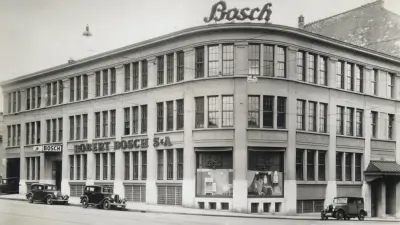
Robert Bosch took an early interest in Scintilla, which was founded in Zuchwil, near Solothurn, in 1917. Its magneto ignition system, known simply as the “Magneto,” was also viewed as reliable. It was even used in the Spirit of St. Louis, the plane Charles Lindbergh flew across the Atlantic in 1927. The board of management in Stuttgart was afraid the small company might fall into American hands and serve as a basis for the expansion of American trade in European markets. To prevent that, Bosch acquired the majority of shares in Scintilla AG in a hidden acquisition in 1935. A Swiss bank acted as the middleman. The purchases were not announced until 1954.
In the early years after the second world war, Bosch sold its products through Auto-Magneto AG, Geneva-Zurich, which allowed the Swiss sales offices to continue to operate. Once the Swiss trade restrictions were lifted, Auto-Magneto AG was renamed Robert Bosch AG.
The world’s first power jigsaw
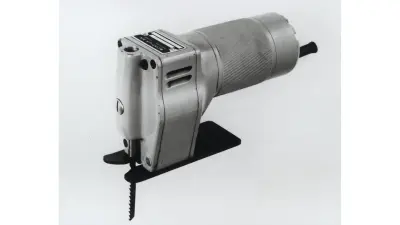
The Lesto jigsaw
Scintilla AG, which produced not only automotive technology, but also power tools – sold under the “Lesto” brand – achieved a major success during this time: Scintilla employee Albert Kaufmann, inspired by his wife’s sewing machine, invented the world’s first power jigsaw in 1946. The saw was produced in Zuchwil starting in 1947. That same year, with the main plant in Zuchwil running low on space, Scintilla built a branch plant in St. Niklaus. The new site, located in a former luxury hotel, mainly produced saw blades, step drills, and blades for garden equipment, all to the superior standards of quality for which Switzerland is known.
After property in Switzerland was released and Scintilla was officially acquired as a subsidiary, Bosch built its own production site in St. Niklaus in 1956, giving the Swiss sales company Robert Bosch S.A. production company to work alongside. What followed was a success story lasting many years. However, the markets changed as the decades went on. The pressure on prices created by mounting global competition brought a halt to production of power tools in Solothurn in 2016. Still, Solothurn remains an important location for Bosch. It is home to the head office with worldwide responsibility for power tools and accessories. By contrast, the St. Niklaus plant has continued to operate and celebrated the official dedication of a new expansion in 2019.
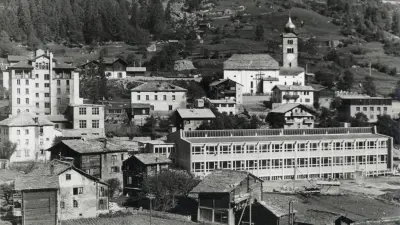
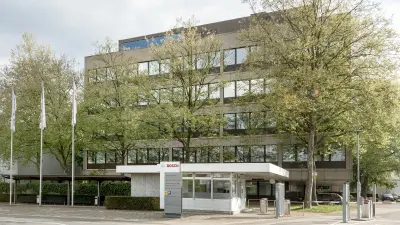
The new building for the Swiss Bosch headquarters was completed in Otelfingen in 1995, right on time for the 75th anniversary of Robert Bosch AG. Workshops, a warehouse, administration, and sales, previously spread across multiple locations, were now brought together under a single roof. After more than two decades, the business of the Automotive Technology and Safety Systems operating units was moved to Urdorf, in the canton of Zurich, in 2017.
Back in 2007, Robert Bosch AG moved its legal registered office from Otelfingen to Zuchwil, in the canton of Solothurn. It remains there to this day and the hundredth birthday could be celebrated in 2020.
Author: Angelika Merkle

